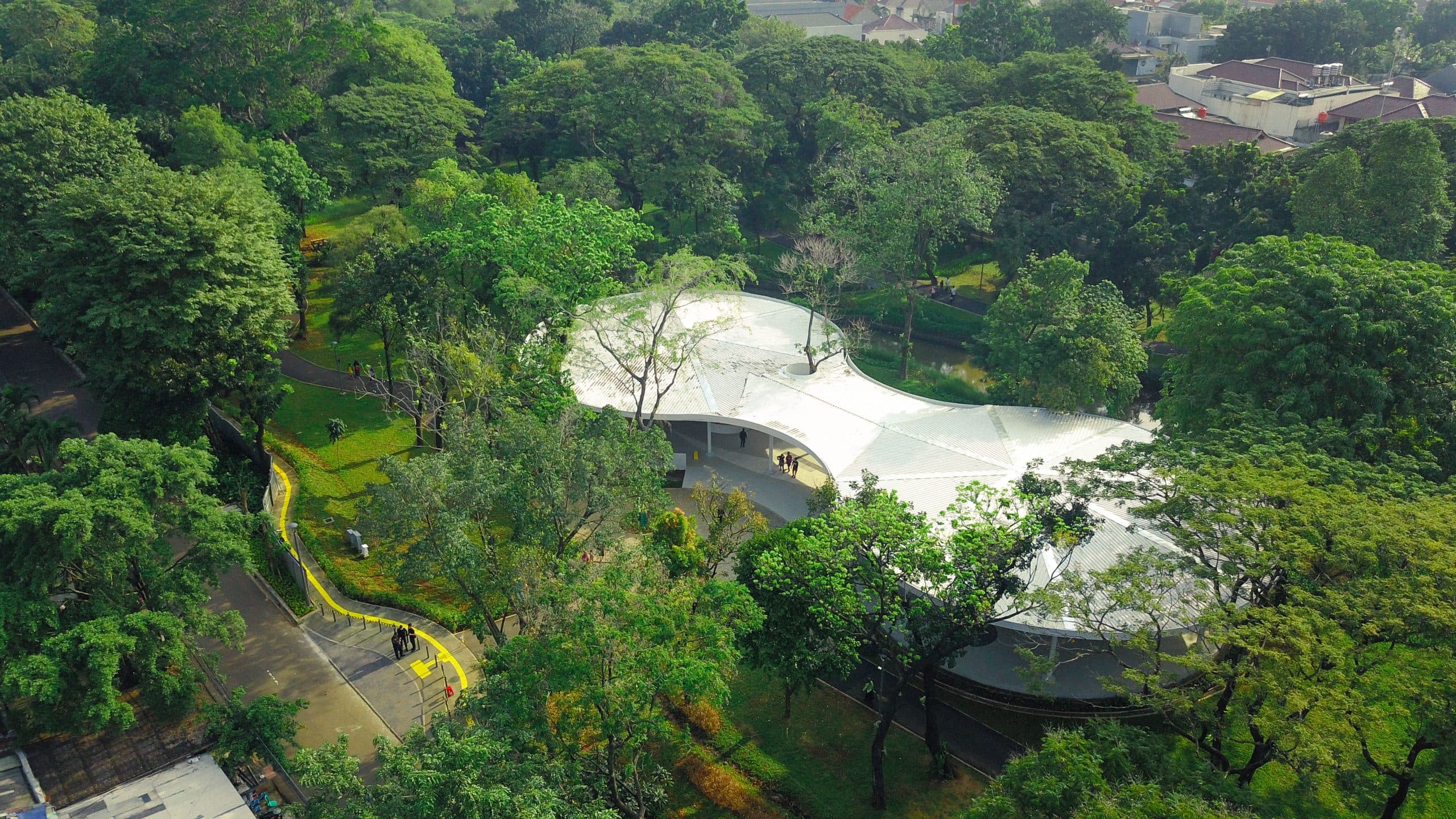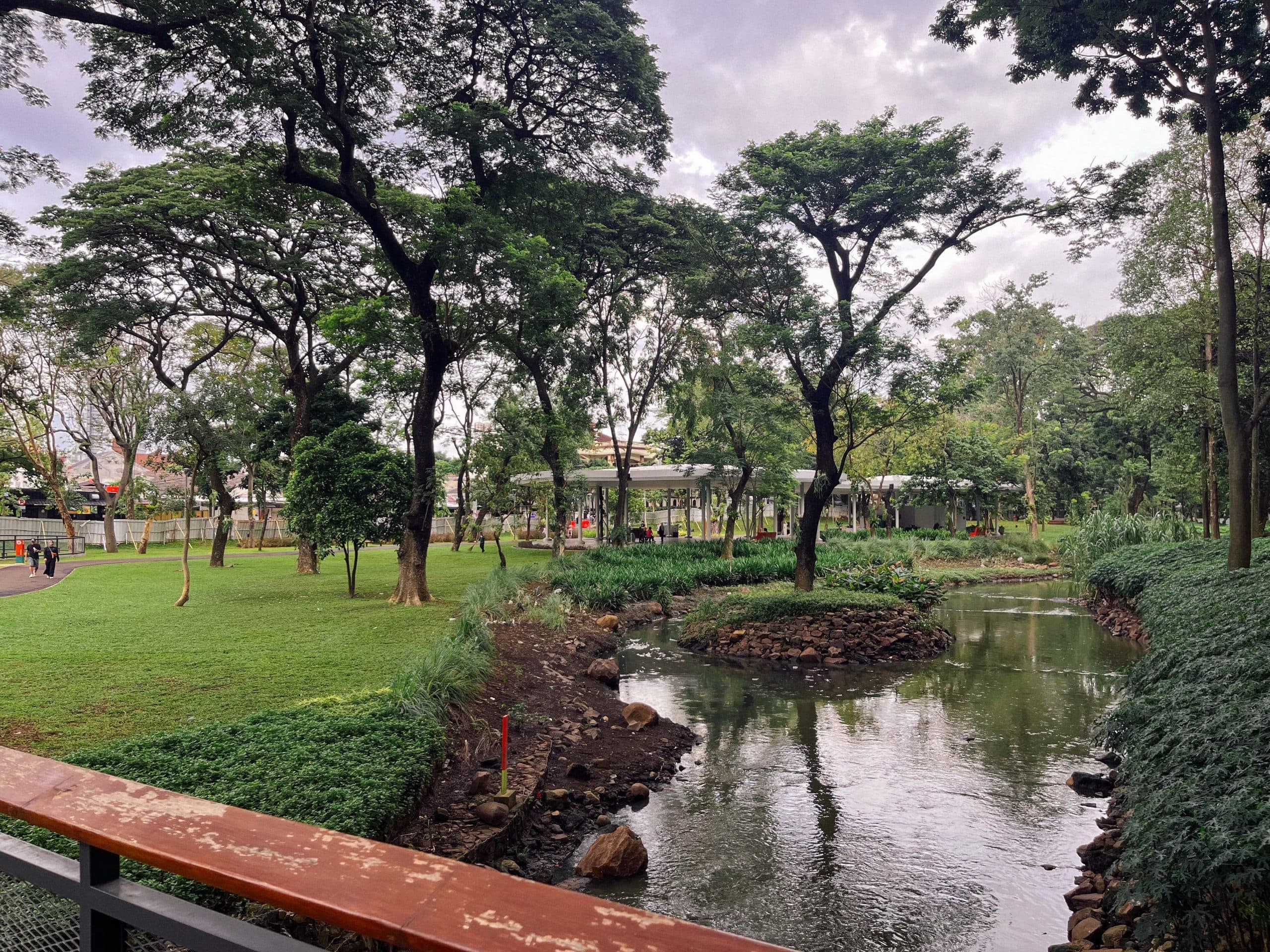

Before and after — the river re-naturalized into a living ecological corridor.
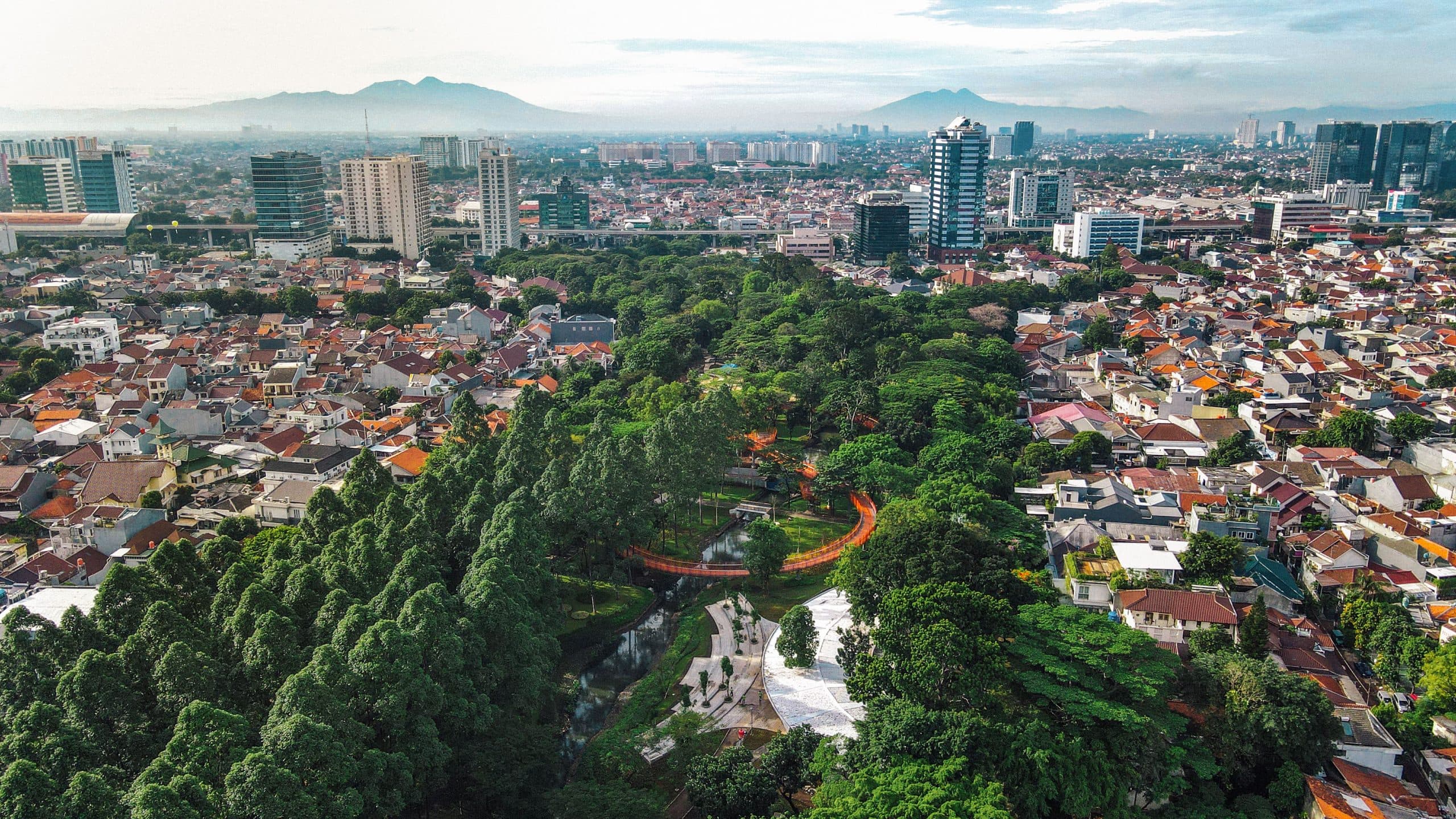
Connecting People with Nature
The Tebet Eco Park is a 7.3-hectare pilot public park project, located in South Jakarta in a densely populated area. It focuses on an active restoration of the site’s ecology with tree conservation and planting; reduces the risk of flooding with river re-naturalization; and cultivates an inclusive environment that facilitates access to a wide offering of educational programming and recreational activities, providing maximum benefit for park users and surrounding nature inhabitants.

Before its transformation, the site of Tebet Eco Park comprised not one, but two disjointed parks known as Taman Seno and Taman Honda Tebet. This 7.3-hectare green space in Jakarta was fragmented by roads and a concrete canal, suffering from poor circulation and chronic seasonal flooding. Despite a canopy of mature trees, it was underused by the public, offering little ecological function or community connection.

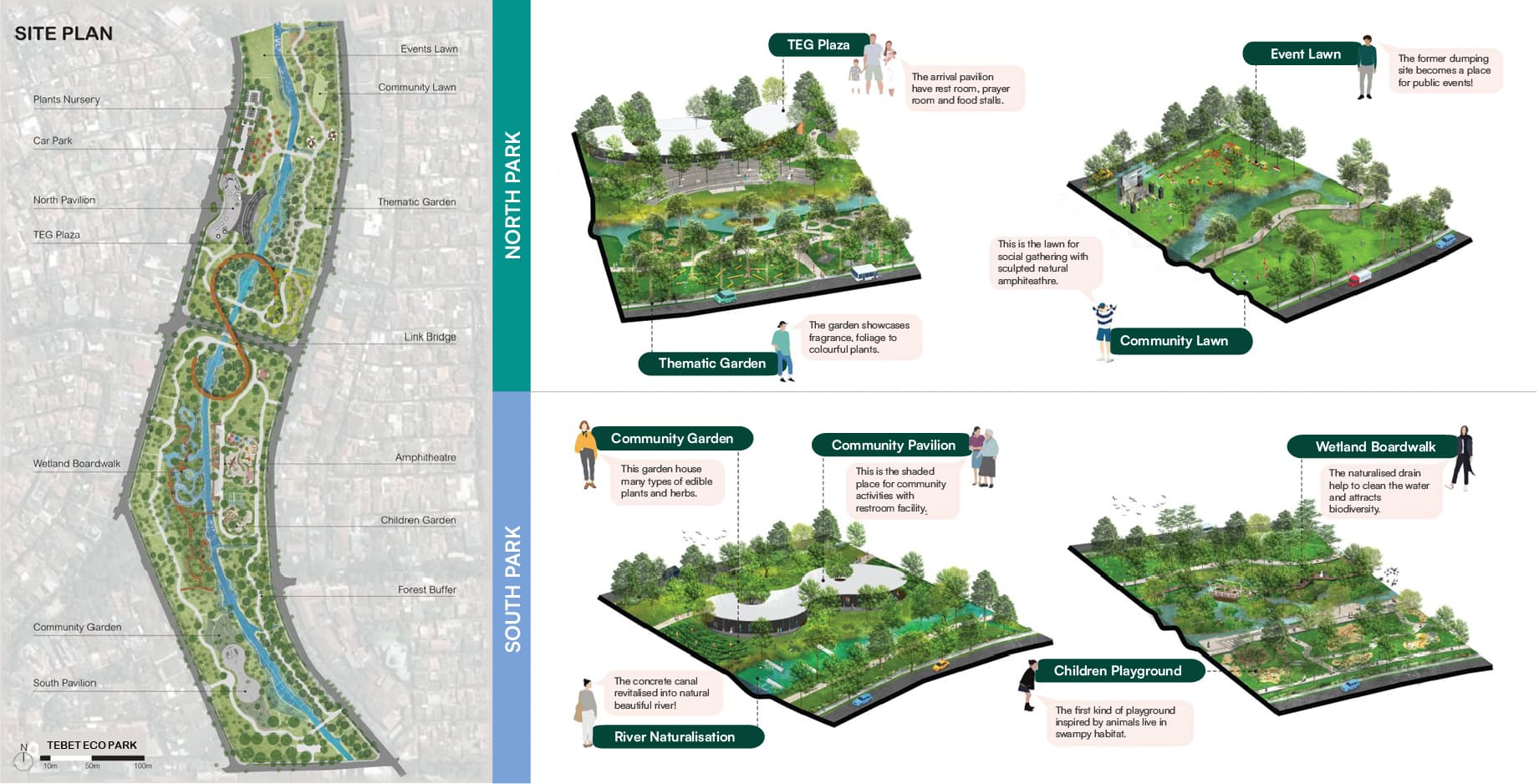
Our vision was fueled by a passion for regeneration. The strategy was to restore the three elements that sustain life: water, plants, and human connection. The hard-lined canal was de-engineered and naturalized into a soft-edged waterway, while the floodplain was widened to absorb floodwater and create a biodiverse habitat. A new wetland system was introduced to naturally filter stormwater runoff. To reconnect the fragmented landscape, iconic bridges and looping paths were designed to restore flow for both people and wildlife. All existing trees were preserved, and thematic zones including gardens, forest trails, and pavilions were created to support diverse community activities.
Every construction decision was aligned with the goal of regeneration. To minimize impact, grading was kept low by aligning structures with the site's existing contours. Where tree removal was unavoidable, the timber was thoughtfully repurposed into new playgrounds, benches, and decking. Even the concrete from the old canal was reused as base material. Boardwalks and pavilions were carefully designed to hover over root zones or slip between canopies, allowing access while preserving the delicate ecosystem. This knowledgeable approach ensured that the act of building served renewal, not disruption.

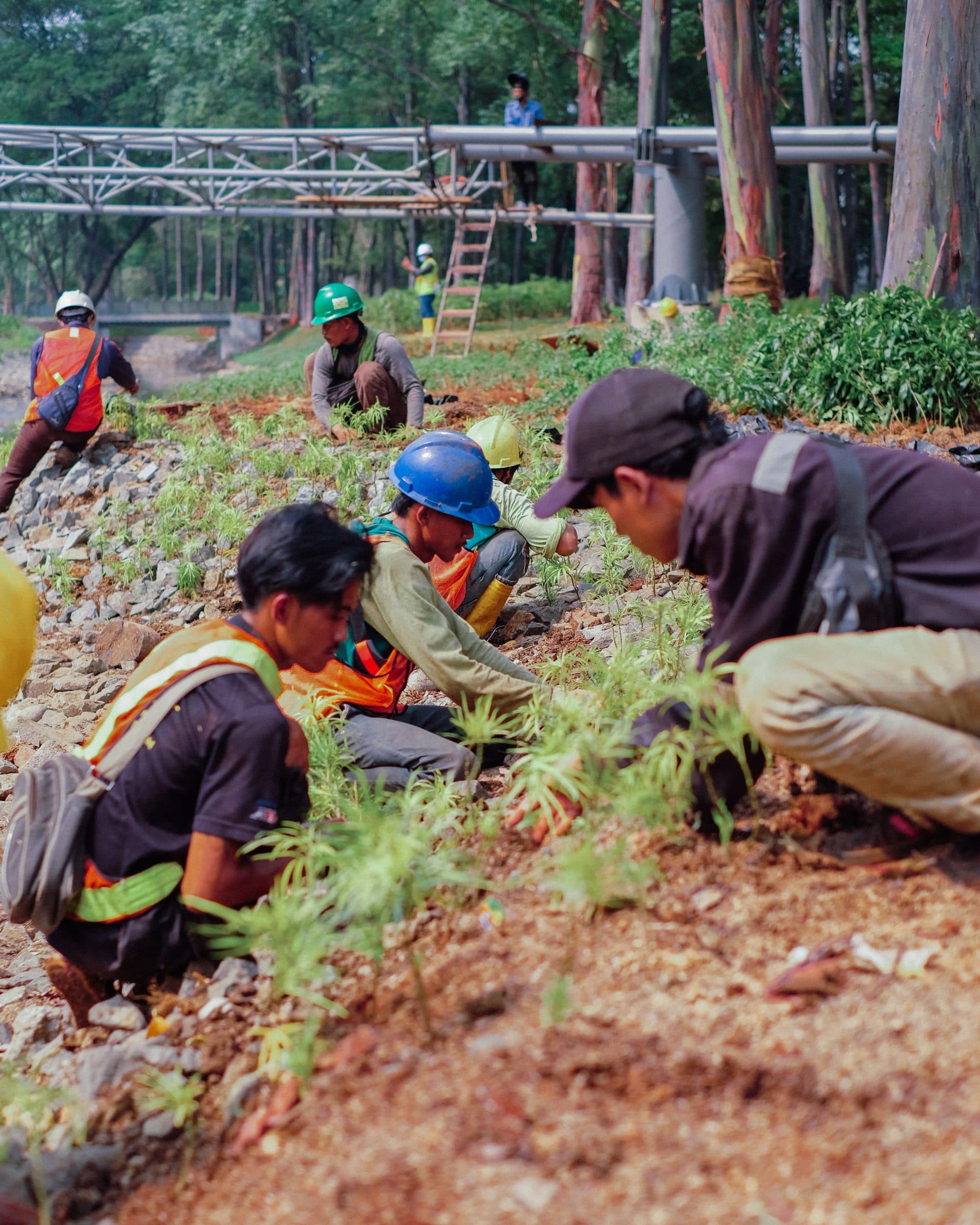
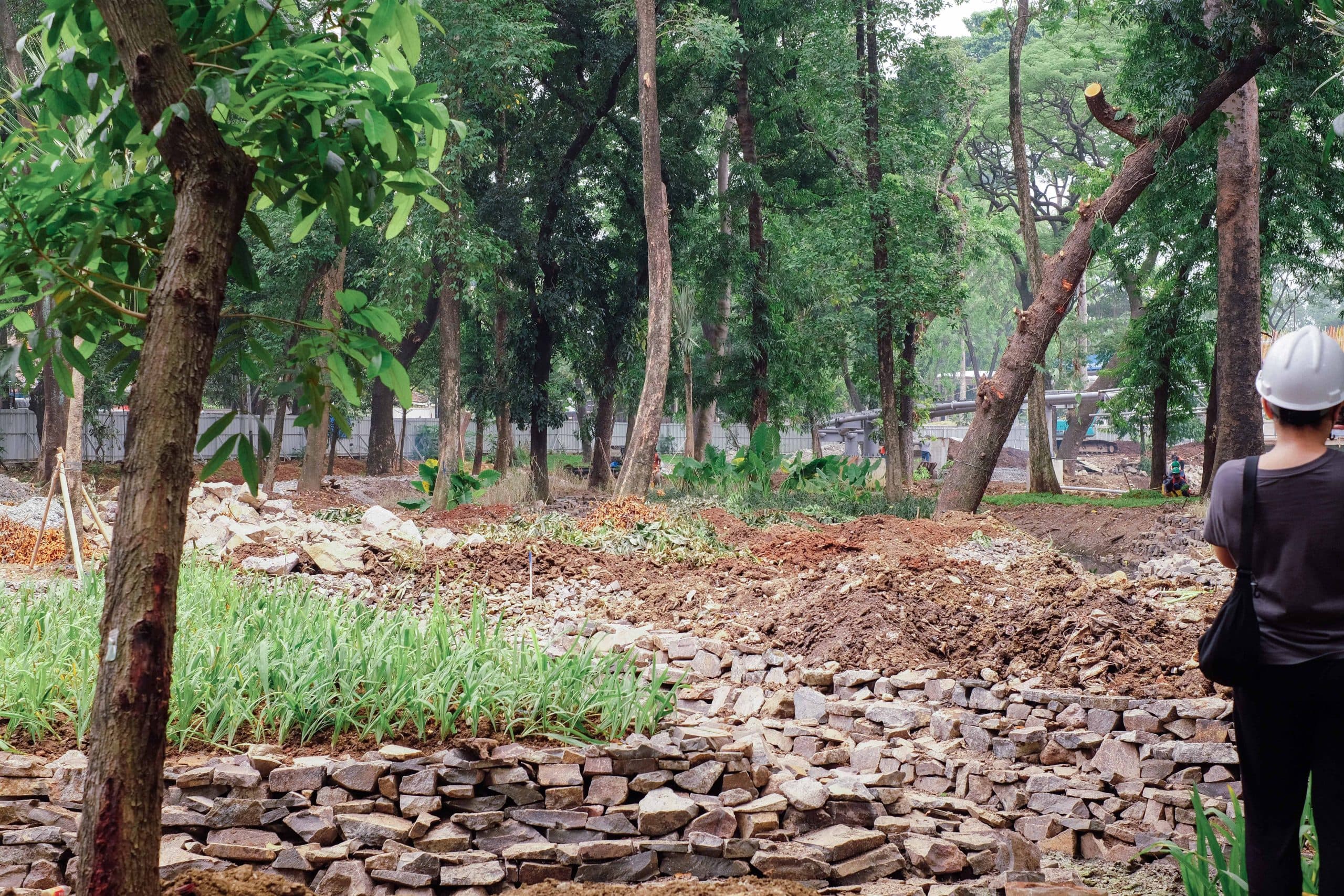
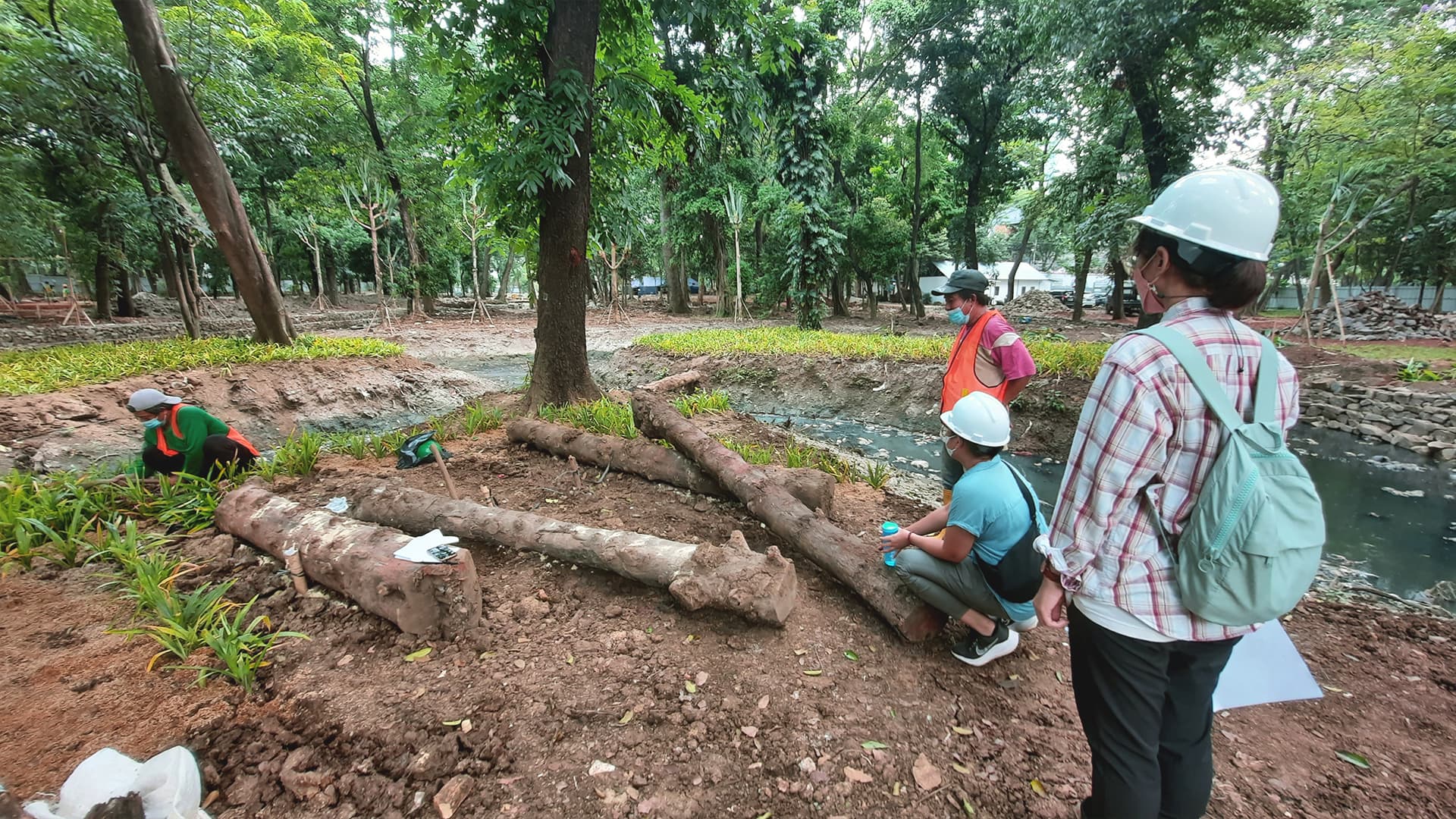


Before and after — the river re-naturalized into a living ecological corridor.
Today, Tebet Eco Park has been reborn as a functioning green infrastructure for the city. Its restored waterway and wetland system actively reduce flooding and filter runoff, while a thriving landscape of new plants attracts pollinators, birds, and other wildlife. Thousands of people visit daily, reclaiming the park as a vital space for wellness, learning, and community life. By boosting the local economy and raising public awareness, the park demonstrates how urban landscapes can move beyond sustainability and toward regeneration, giving back more to the city and its people than they take.
